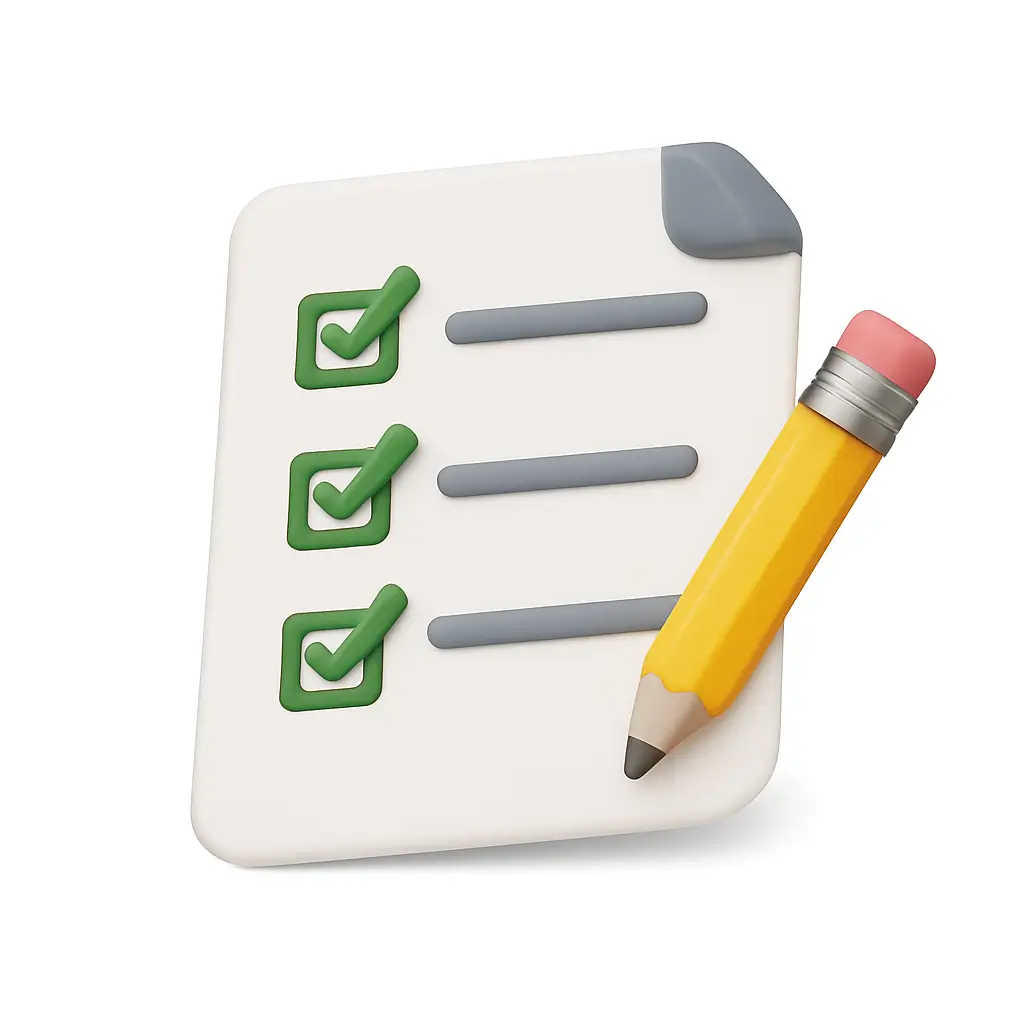Deep Focus Essentials
Maintain deep focus and productivity despite distractions.'
June 16, 2025 · 6 min read

🌀 The attention crisis
Lisa sits at her desk with a critical report due in three hours.
Her phone buzzes. Slack notification. Email alert. A colleague stops by to chat.
Twenty minutes later, she's still on paragraph one.
Sound familiar?
We live in the most distracted era in human history. The average knowledge worker checks email every 11 minutes. It takes 23 minutes to fully refocus after an interruption.
Deep focus isn't just nice to have anymore. It's a competitive advantage.
What deep focus really means
Deep focus is the ability to concentrate on cognitively demanding tasks without distraction. It's when you lose track of time because you're completely absorbed in meaningful work.
Deep focus produces:
- Higher quality output
- Faster completion times
- Greater job satisfaction
- Breakthrough insights
Shallow work produces:
-
Busy work that feels productive but isn't
-
Constant task-switching
-
Mental fatigue
-
Mediocre results
The difference between thriving and surviving often comes down to your ability to focus deeply.
How focus works
Your brain has two attention networks:
Executive attention handles focused, deliberate thinking. It's powerful but limited and gets depleted with use.
Default mode network activates during rest and mind-wandering. It's where creativity and insight often emerge.
Both are important, but most people spend too much time in scattered, reactive mode and not enough in either focused work or true rest.
The real cost of interruptions
Every interruption has a compound cost:
Immediate cost: Time spent on the distraction
Switching cost: Mental energy to change tasks
Resumption cost: Time to remember where you left off
Quality cost: Mistakes made while refocusing
A two-minute interruption can cost 25 minutes of productivity. Multiple interruptions can destroy an entire morning's work.
Build your focus foundation
Audit Your Attention
Track your focus for one day. Note every time you:
- Check your phone
- Switch between tasks
- Get interrupted
- Feel distracted
This awareness is the first step to change.
Design Your Environment
Your physical space shapes your mental state:
Remove distractions:
- Put phone in another room
- Close unnecessary browser tabs
- Use noise-canceling headphones
- Clear your desk of clutter
Add focus cues:
- Keep a water bottle nearby
- Have a notebook for capturing thoughts
- Use a specific playlist for deep work
- Set up proper lighting
Protect Your Peak Hours
Identify when your brain works best. For most people, it's the first 2-4 hours after waking up.
Guard these hours fiercely. Schedule your most important work during peak times and protect them from meetings and interruptions.
The deep work protocol
Time Blocking
Instead of working from a to-do list, block specific times for specific types of work:
9:00-11:00 AM: Deep work on project A
11:00-11:30 AM: Email and messages
11:30 AM-1:00 PM: Deep work on project B
This creates structure and reduces decision fatigue about what to work on next.
The 90-Minute Rule
Work in 90-minute blocks aligned with your natural ultradian rhythms. After each block, take a 15-20 minute break.
This matches your brain's natural attention cycles and prevents mental fatigue.
Single-Tasking
Multitasking is a myth. Your brain can only focus on one cognitively demanding task at a time.
Instead of juggling:
- Choose one task
- Work on it completely
- Finish or reach a natural stopping point
- Then move to the next task
Tame digital distractions
Notification Detox
Turn off all non-essential notifications:
- Social media alerts
- News updates
- App notifications
- Email previews
Check these on your schedule, not theirs.
The Phone Separation
Your phone is designed to be addictive. Create physical distance:
- Keep it in another room during deep work
- Use a traditional alarm clock instead of your phone
- Charge it outside your bedroom
- Use app timers to limit usage
Browser Discipline
Use website blockers during focus sessions:
- Cold Turkey
- Freedom
- StayFocusd
- Built-in screen time controls
Block social media, news sites, and other time-wasters during work hours.
Handle interruptions
The interruption log
Keep a notebook to capture interrupting thoughts:
- "Remember to call mom"
- "Check on project deadline"
- "Research vacation options"
Write it down and return to your work. Review the log during breaks.
A polite deflection
When colleagues interrupt:
- "I'm in a focus block until 11 AM. Can we talk then?"
- "Let me finish this thought and I'll come find you"
- "Can you send me an email about this?"
Most interruptions aren't truly urgent.
The comeback strategy
When you do get interrupted:
- Take a moment to note where you were
- Use a brief ritual to refocus (three deep breaths)
- Review your last few sentences or steps
- Ease back into the work gradually
Advanced techniques
The Pomodoro Technique
Work for 25 minutes, then take a 5-minute break. After four cycles, take a longer 15-30 minute break.
This creates urgency and makes large tasks feel manageable.
Attention Restoration
Between focus sessions, engage in activities that restore mental energy:
- Take a walk in nature
- Do light stretching
- Practice deep breathing
- Look at something distant
Avoid screens and stimulating content during breaks.
The Focus Ritual
Create a consistent routine to signal deep work time:
- Clear your desk
- Put on specific music
- Review your goals for the session
- Take three deep breaths
Rituals help your brain transition into focus mode faster.
Build focus stamina
Like physical fitness, focus improves with training:
Week 1: 20-minute focus sessions
Week 2: 30-minute sessions
Week 3: 45-minute sessions
Week 4: 60-90 minute sessions
Start small and build gradually. Consistency matters more than duration.
Don't skip recovery
Deep focus requires deep rest:
Quality sleep: 7-9 hours of consistent sleep
Regular breaks: Short breaks every hour, longer breaks every few hours
Weekly downtime: At least one day with minimal cognitive demands
Vacation time: Extended periods away from work
You can't sprint indefinitely. Recovery enables sustained high performance.
Measure your progress
Track these metrics:
-
Hours of deep work per day
-
Quality of output during focus sessions
-
Time to complete similar tasks
-
Energy levels throughout the day
Focus on trends over time, not daily fluctuations.
Common focus killers
The Urgency Trap
Not everything urgent is important. Learn to distinguish between:
- Urgent and important (do immediately)
- Important but not urgent (schedule)
- Urgent but not important (delegate or minimize)
- Neither urgent nor important (eliminate)
The Perfectionism Paralysis
Perfectionism kills focus by creating anxiety and overthinking. Aim for excellence, not perfection.
Set "good enough" standards for most tasks and save perfectionism for truly critical work.
The Comparison Game
Stop measuring your focus against others. Everyone has different peak hours, attention spans, and work styles.
Focus on your own improvement and find what works for you.
Your deep focus plan
This week:
- Identify your peak focus hours
- Block 90 minutes of uninterrupted time daily
- Remove three major distractions from your workspace
This month:
- Establish consistent focus rituals
- Build up to 2-3 deep work sessions per day
- Create systems for managing interruptions
This quarter:
- Develop focus stamina for 2-3 hour sessions
- Optimize your environment and tools
- Make deep work a non-negotiable part of your schedule
The compound effect
Deep focus creates a compound effect:
Better work leads to greater recognition leads to more interesting projects leads to increased satisfaction leads to better performance.
In a world of constant distraction, the ability to focus deeply isn't just a skill. It's a superpower.
The question isn't whether you can afford to develop deep focus. It's whether you can afford not to.
---
What's one distraction you could eliminate today to create space for deeper focus?

